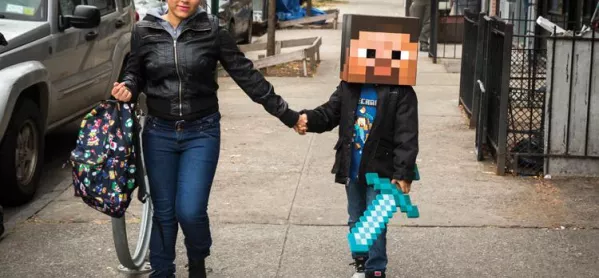Two groups of children − one Muslim and one Christian - are planning their next construction projects. The Muslim children wonder how they are going to create the stained glass windows depicting Jesus feeding the 5,000, while the Christian children worry about creating the large dome of a mosque using nothing but square blocks.
These students are using the computer game Minecraft to consolidate what they have learned about each other’s religions in class by building virtual houses of worship.
As he places individual prayer mats, a Christian child asks: “So what’s up with going on your knees and facing east when you pray?”
One of the Muslim children replies: “Going on our knees to pray is called sujud. And we face east because that’s where Mecca is.”
“Oh, just like how we put our hands together and face the altar,” the Christian child says.
Immersive learning
I am exploring the uses of Minecraft in education as part of my studies at the University of Sussex. Minecraft has dominated the internet in recent years, but it is now often also used in schools as a tool for facilitating education by immersing children in a game they love at the same time as curriculum-based knowledge.
This upcoming academic year will see the release of the new Minecraft: Education Edition, aimed specifically at teachers and their students. But even without a dedicated education version, teachers have found that their students sometimes learn more from playing Minecraft in class than they originally intended them to.
Stephen Elford, a seasoned Minecraft educator who is known to his students as “Elfie” describes having this experience in one of his blog posts.
While exploring a giant version of an animal cell in a Minecraft map, two of his most challenging students started hitting one another in the game. One student jumped on to a teleport block to flee the fight while the other shouted: “Yeah, you better run. I was about to pick you up and throw you into the lysosome!” In doing so, the student demonstrated that he had retained knowledge of the waste-recycling functions of the lysosome − something that he had experienced and learned through Minecraft.
Cultural understanding
Supporting the retention of knowledge is only the start of what Minecraft can do, though.
Back in the RE classroom, the children continue to discuss their religious practices, finding more comparisons and differences as they start to gain a better understanding of one another. By immersing children in these virtual worlds of thought, we allow them to explore and question them and to develop tools such as cultural understanding.
After a while, the Christian child returns to building a minaret, while the Muslim child chases a giant slime out from between the pews he has been making. And as they talk, a large square sun sets on the cathedral and mosque they are building.
Patrick Smith is an anthropology student at the University of Sussex
Want to keep up with the latest education news and opinion? Follow TES on Twitter and like TES on Facebook
